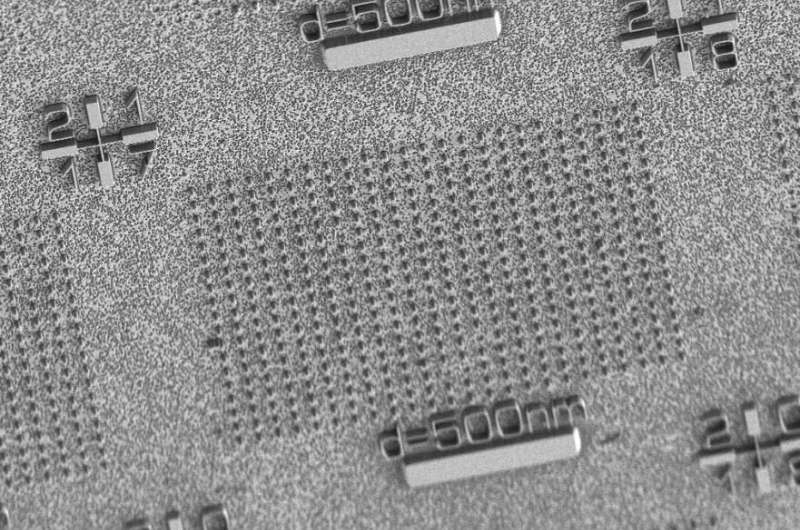This article has been reviewed according to Science X's editorial process and policies. Editors have highlighted the following attributes while ensuring the content's credibility:
fact-checked
trusted source
proofread
Scientists present a new method for imaging individual electrons

Imagine going for an MRI scan of your knee. This scan measures the density of water molecules present in your knee, at a resolution of about one cubic millimeter—which is great for determining whether, for example, a meniscus in the knee is torn. But what if you need to investigate the structural data of a single molecule that's five cubic nanometers, or about 10 trillion times smaller than the best resolution current MRI scanners are capable of producing?
That's the goal for Dr. Amit Finkler of the Weizmann Institute of Science's Chemical and Biological Physics Department. In a recent study, Finkler, Ph.D. student Dan Yudilevich and their collaborators from the University of Stuttgart, Germany, have managed to take a giant step in that direction, demonstrating a novel method for imaging individual electrons. The method, now in its initial stages, might one day be applicable to imaging various kinds of molecules, which could revolutionize the development of pharmaceuticals and the characterization of quantum materials.
Current magnetic resonance imaging (MRI) techniques have been instrumental in diagnosing a vast array of illnesses for decades, but while the technology has been groundbreaking for countless lives, there are some underlying issues that remain to be resolved. For example, MRI readout efficiency is very low, requiring a sample size of hundreds of billions of water molecules—if not more—in order to function. The side effect of that inefficiency is that the output is then averaged. For most diagnostic procedures, the averaging is optimal, but when you average out so many different components, some detail is lost—possibly concealing important processes that are happening on a smaller scale.
Whether that's a problem or not depends on the question you're asking: For example, there's a lot of information that could be detected from a photograph of a crowd in a packed football stadium, but a photo probably wouldn't be the best tool to use if we wish to know more about the mole on the cheek of the person sitting in the third seat of the fourteenth row. If we wanted to gather more data on the mole, getting closer would probably be the way to go.
Finkler and his collaborators are essentially suggesting a molecular close-up shot. Employing such a tool could grant researchers the ability to closely inspect the structure of important molecules, and perhaps lead the way to new discoveries. Furthermore, there are some cases in which a small "canvas" would be essential to the work itself—such as in the preliminary stages of pharmaceutical development.
So how can one achieve a more precise MRI equivalent that can work on small samples—right down to the individual molecule? Finkler, Yudilevich and Stuttgart's Drs. Rainer Stöhr and Andrej Denisenko have developed a method that can pinpoint the precise location of an electron. It is based on a rotating magnetic field that is in the vicinity of a nitrogen-vacancy center—an atom-sized defect in a special synthetic diamond, which is used as a quantum sensor. Because of its atomic size, this sensor is particularly sensitive to nearby changes; because of its quantum nature, it can differentiate whether a single electron is present, or more, making it especially suited to measuring the location of an individual electron with incredible accuracy.
"This new method," says Finkler, "could be harnessed to provide a complementary point of view to existing methods, in an effort to better understand the holy molecular trinity of structure, function and dynamics."
For Finkler and his peers, this research is a pivotal step on the way to precise nanoimaging, and they envision a future in which we would be able to use this technique to image a diverse class of molecules, that will, hopefully, be ready for their close-up.
More information: Dan Yudilevich et al, Mapping Single Electron Spins with Magnetic Tomography, Physical Review Applied (2022). DOI: 10.1103/PhysRevApplied.18.054016
Provided by Weizmann Institute of Science




















